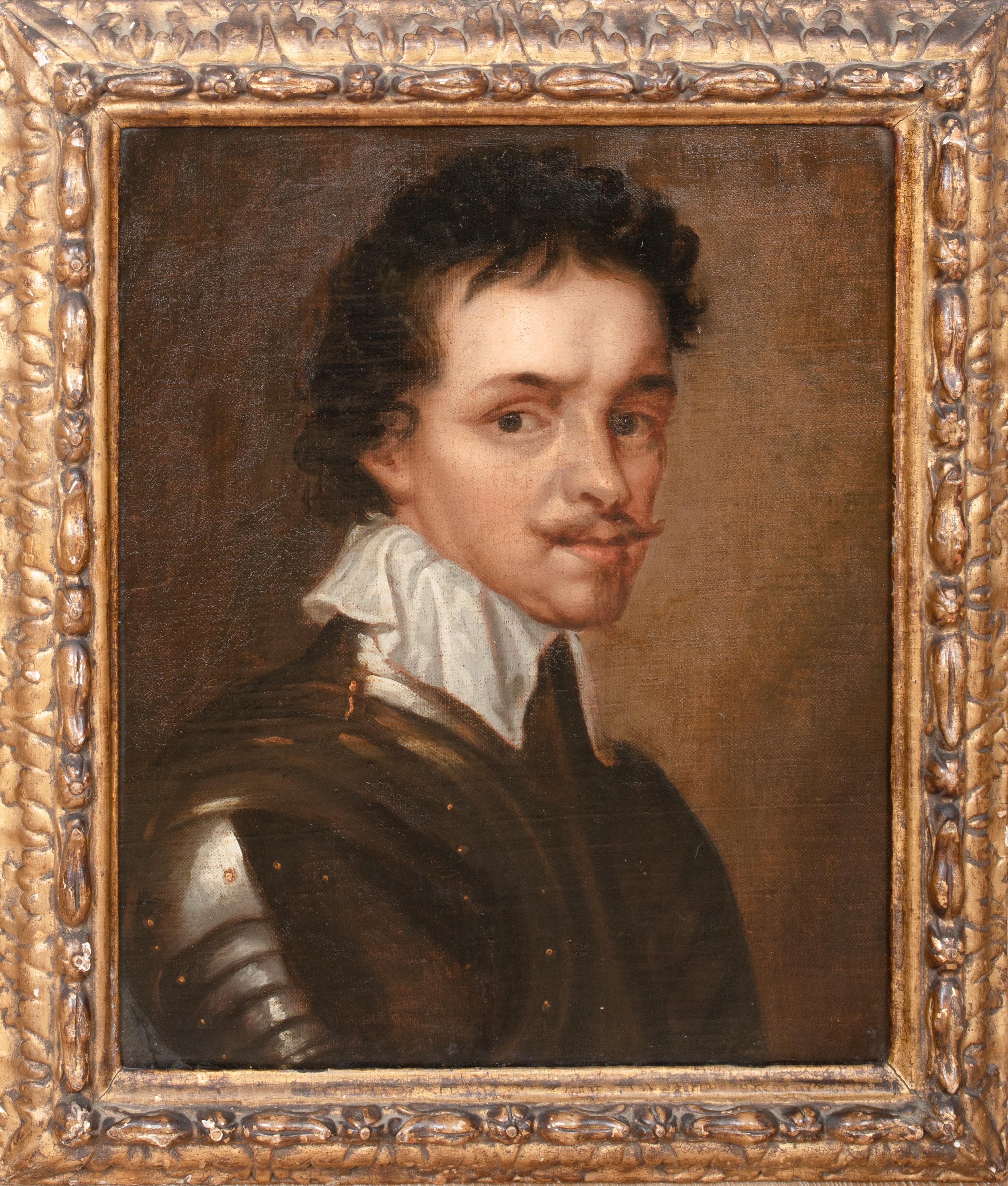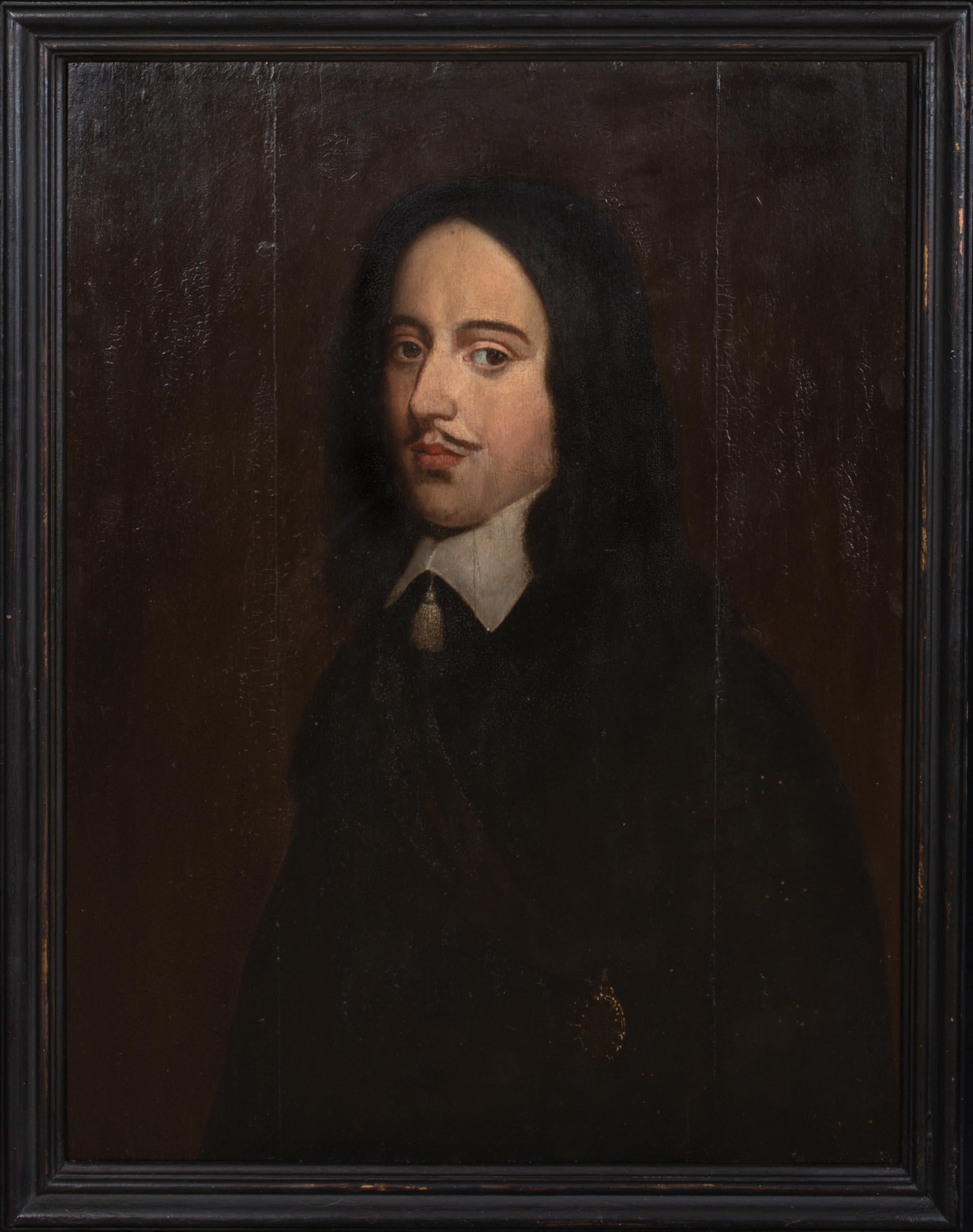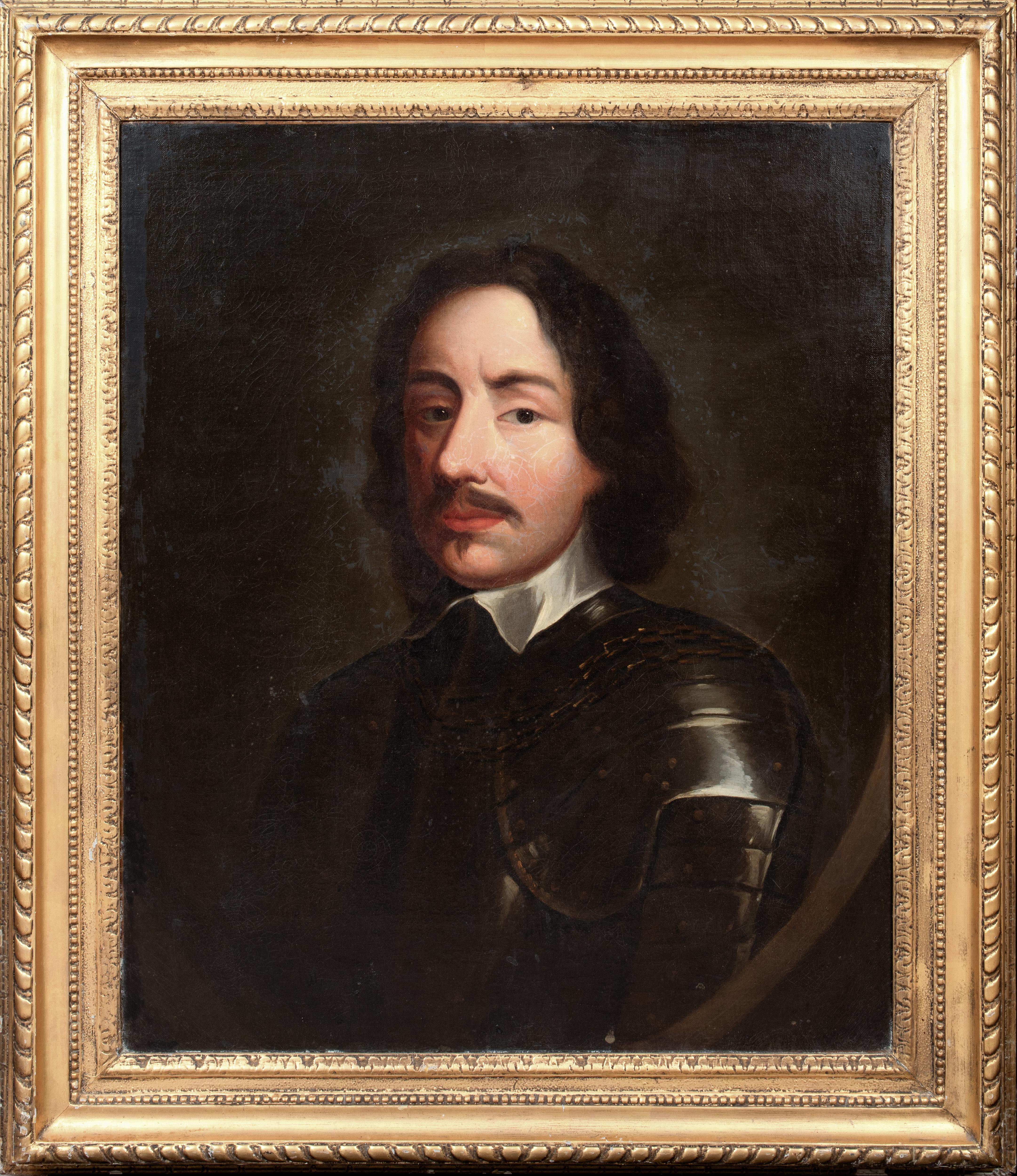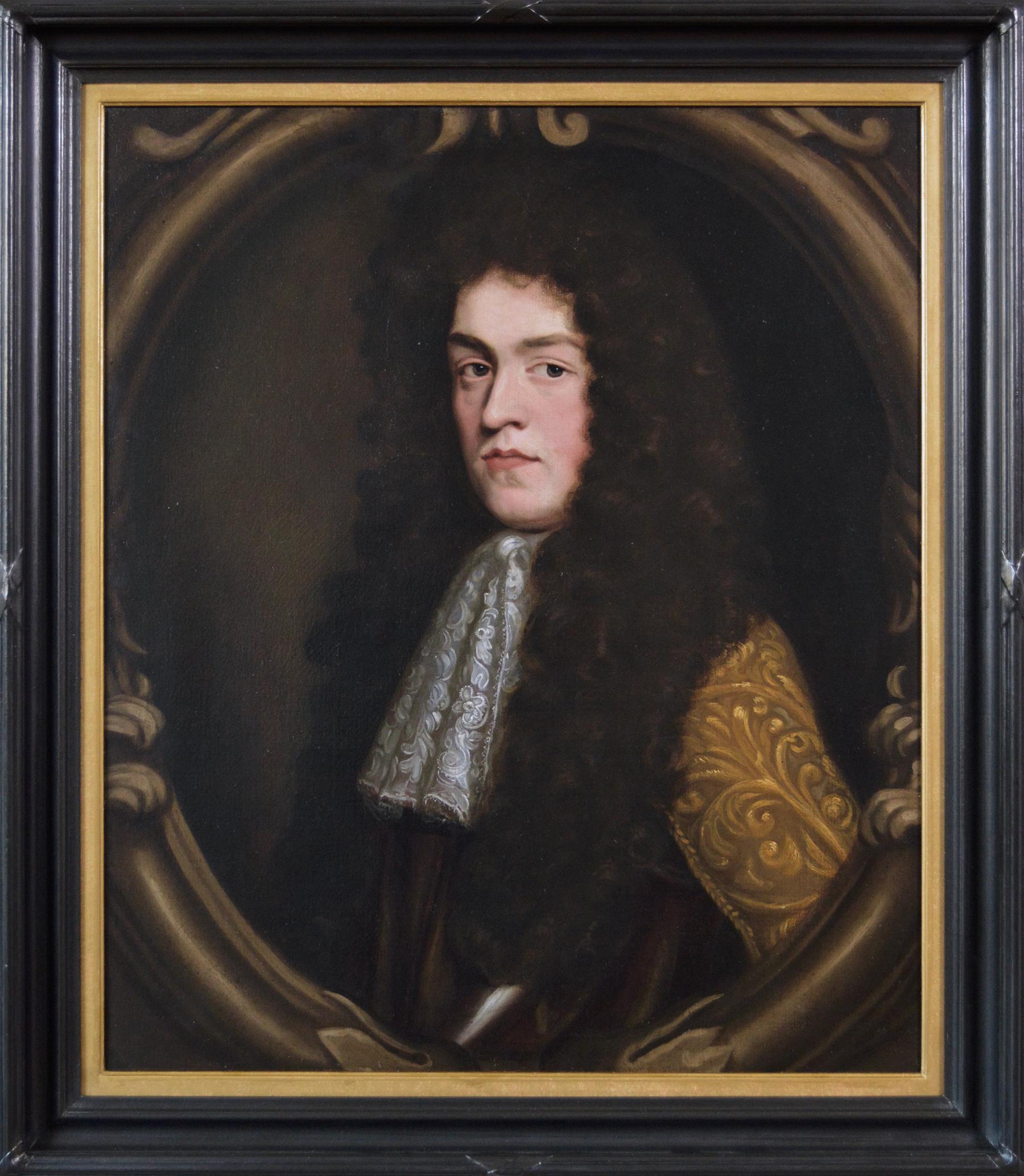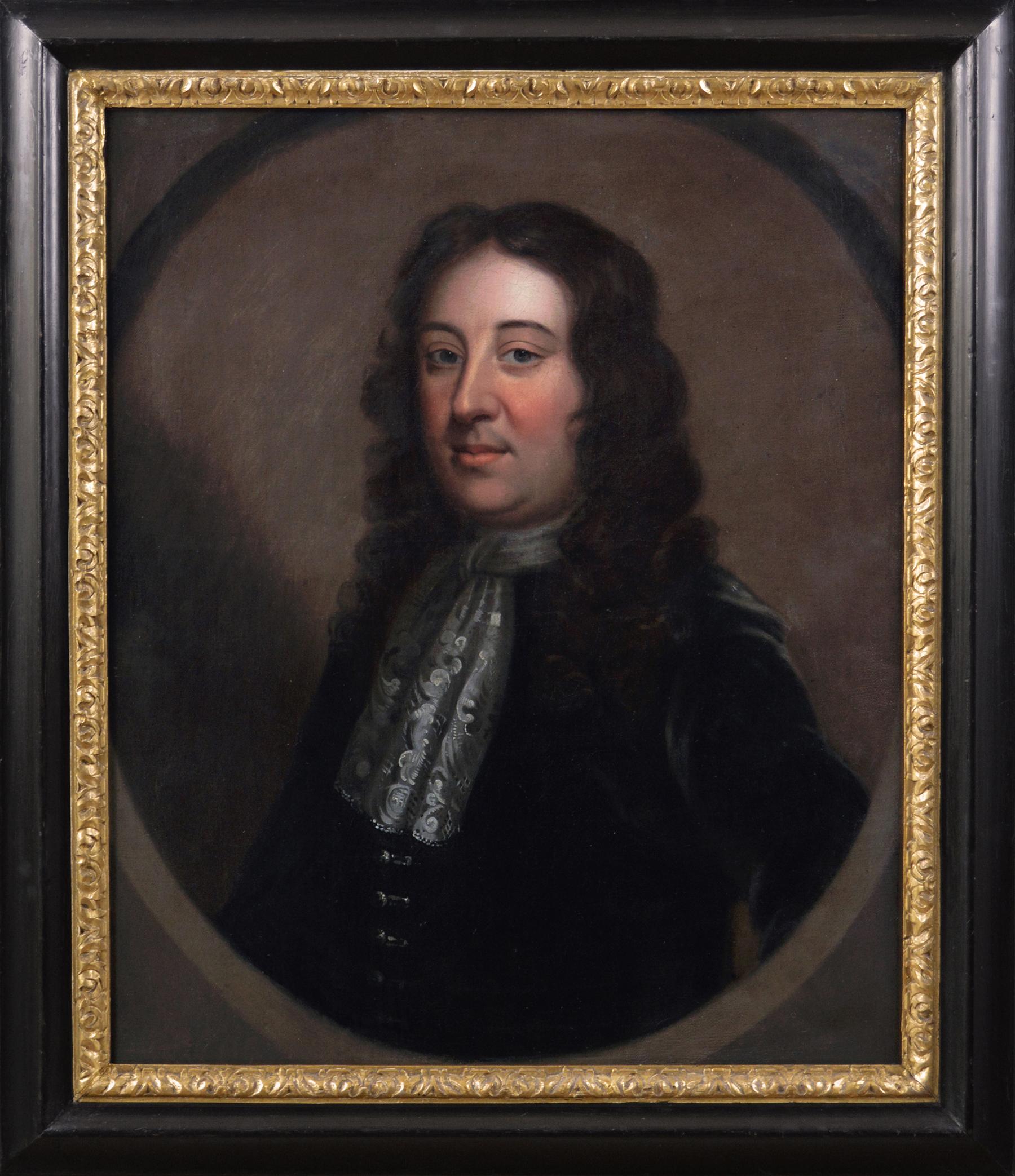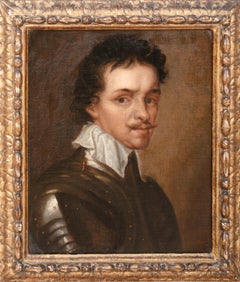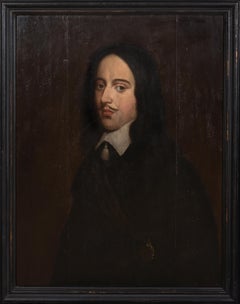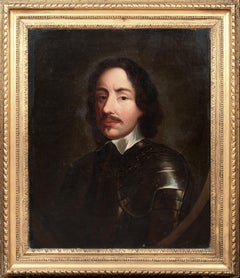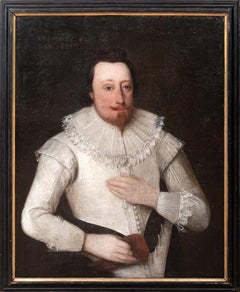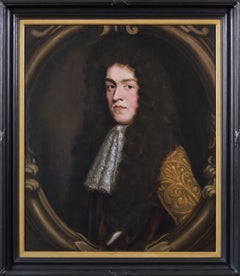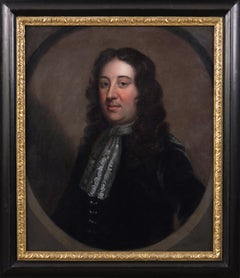Items Similar to Portrait Of William Yorke (1609-1666), 17th Century
Want more images or videos?
Request additional images or videos from the seller
1 of 8
Portrait Of William Yorke (1609-1666), 17th Century
$8,238.73
£6,000
€7,022.22
CA$11,365.90
A$12,494.26
CHF 6,566.41
MX$151,725.76
NOK 81,914.28
SEK 77,608.02
DKK 52,408.57
About the Item
Portrait Of William Yorke (1609-1666), 17th Century
circle of Edward Bower (fl. 1635 – 1667)
Fine large 17th Century English Master portrait of William Yorke, oil on canvas. Excellent quality and condition portrait of Yorke circa 1645 with his family crest bottom left. Superb detail in the face and use of light typical of Bpwer's paintings during the period. Inscribed verso and presented in its original antique hand craved oak wood frame.
William Yorke (c. 1609 – 1 November 1666) was an English lawyer and politician who sat in the House of Commons in two periods between 1654 and 1666.
Yorke was the son of William Yorke of Bassett Down, Lydiard Tregoze, Wiltshire, and his wife Anne Stampe, daughter of Simon Stampe of Oxfordshire. He matriculated at Pembroke College, Oxford on 25 May 1627, aged 17 and was awarded BA in 1630. He entered the Inner Temple in 1630 and was called to the bar in 1637. He was commissioner for excise for Wiltshire in 1644 and was Justice of the Peace for Wiltshire for the first time between 1646 and 1651. He became a bencher of his Inn in 1652 and was JP again from 1652 to 1657. He also became deputy governor for the Society of Mineral and Battery Works in 1652 and remained in that post until his death[1]
In 1654, Yorke was elected Member of Parliament for Wiltshire in the First Protectorate Parliament. He was assistant of the Society of Mines Royal from 1654 to 1655 and deputy governor of the society from 1655 until his death. In 1657 he was commissioner for assessment for WIltshire and became JP again, remaining until his death. He was commissioner for assessment for Wiltshire again from January 1660 until his death. He inherited the estates of his father in 1660. He became a freeman of Devizes in 1660 and became recorder in 1661. In 1661 he was elected MP for Devizes in the Cavalier Parliament. He was an alderman of Devizes from 1662 until his death.[1]
Yorke died at the age of 56 and was buried in the Temple Church on 26 November 1666.[1]
Yorke married Elizabeth Danvers, widow of Henry Danvers of Baynton, Edington, and daughter of William Bower of West Lavington, Wiltshire, before 27 October 1646. Their only son died in infancy[1]
Measurements: 100cm x 75cm framed approx
- Dimensions:Height: 39.38 in (100 cm)Width: 29.53 in (75 cm)
- Medium:
- Circle Of:Edward Bower (1597 - 1667, English)
- Period:
- Condition:
- Gallery Location:Blackwater, GB
- Reference Number:Seller: 7832951stDibs: LU157728397552
About the Seller
4.9
Gold Seller
Premium sellers maintaining a 4.3+ rating and 24-hour response times
Established in 2008
1stDibs seller since 2021
296 sales on 1stDibs
Typical response time: 1 hour
- ShippingRetrieving quote...Shipping from: Blackwater, United Kingdom
- Return Policy
Authenticity Guarantee
In the unlikely event there’s an issue with an item’s authenticity, contact us within 1 year for a full refund. DetailsMoney-Back Guarantee
If your item is not as described, is damaged in transit, or does not arrive, contact us within 7 days for a full refund. Details24-Hour Cancellation
You have a 24-hour grace period in which to reconsider your purchase, with no questions asked.Vetted Professional Sellers
Our world-class sellers must adhere to strict standards for service and quality, maintaining the integrity of our listings.Price-Match Guarantee
If you find that a seller listed the same item for a lower price elsewhere, we’ll match it.Trusted Global Delivery
Our best-in-class carrier network provides specialized shipping options worldwide, including custom delivery.More From This Seller
View AllPortrait Thomas Wentworth, 1st Earl of Stafford (1593-1641), 17th Century
Located in Blackwater, GB
Portrait Thomas Wentworth, 1st Earl of Stafford (1593-1641), 17th Century
Circle of Anthonius VAN DYCK (1599-1641)
Fine 17th century English School Old Master portrait of Anthonius...
Category
19th Century Portrait Paintings
Materials
Canvas, Oil
Portrait Of William II Prince Of Orange, circa 1650 Dutch School
Located in Blackwater, GB
Portrait Of William II Prince Of Orange, circa 1650
Dutch School
Large 17th Century Dutch Schoo Old Master portrait of William II Prince Of Orange, oil on panel. Early important original court portrait on an oak panel of the young prince and father of William III, his only child and later King...
Category
17th Century Portrait Paintings
Materials
Canvas, Oil
Portrait of General Henry Ireton (1611-1651) Son In Law to Oliver Cromwell
By Robert Walker
Located in Blackwater, GB
Portrait of General Henry Ireton (1611-1651) Son In Law to Oliver Cromwell, 17th Century
attributed Robert WALKER (1607-1658)
Large 17th Century portrait of General Henry Ireton, oil on canvas. Excellent quality and condition Civil War portrait...
Category
17th Century Portrait Paintings
Materials
Oil, Canvas
Portrait Of A Gentleman, identified as Robert Carr, Earl Of Somerset (1587-1645)
Located in Blackwater, GB
Portrait Of A Gentleman, identified as Robert Carr, Earl Of Somerset (1587-1645), 17th Century
English Court Portrait dated 1625
Large 17th Century English Court Portrait, possibly...
Category
17th Century Portrait Paintings
Materials
Canvas, Oil
Portrait Of Richard Jones, 1st Earl Of Ranelagh, 17th Century SIR PETER LELY
By Sir Peter Lely
Located in Blackwater, GB
Portrait Traditionally Identified as Richard Jones, 1st Earl Of Ranelagh, 17th Century
School Of Sir Peter Lely (1618-1680)
Large 17th Century Portrait believed to be Rochard Jones...
Category
17th Century Portrait Paintings
Materials
Oil, Canvas
Portrait Of General George Monck, 1st Duke of Albermarle (1608-1670)
By Jacob Huysmans
Located in Blackwater, GB
Portrait Of General George Monck, 1st Duke of Albermarle (1608-1670), 17th Century
by Jacob Huysmans (1633-1696)
Huge 17th Century British Old Master portrait of General Monck, 1st...
Category
17th Century Portrait Paintings
Materials
Canvas, Oil
You May Also Like
Portrait of William Herbert, 3rd Earl of Pembroke, Early 17th Century Portrait
Located in London, GB
English School, (circa 1600)
Portrait of William Herbert, 3rd Earl of Pembroke
Oil on panel, oval
Image size: 29¼ x 23⅞ inches
Painted wooden frame
Provenance:
176, Collection of Francis Greville, 1st Earl of Warwick.
The Trustees of the Lord Brooks’ Settlement, (removed from Warwick Castle).
Sotheby’s, London, 22nd March 1968, lot 81.
Painted onto wooden panel, this portrait shows a dark haired gentleman in profile sporting an open white shirt. On top of this garments is a richly detailed black cloak, decorated with gold thread and lined with a sumptuous crimson lining. With the red silk inside it’s all very expensive and would fall under sumptuary laws – so this is a nobleman of high degree.
It’s melancholic air conforms to the contemporary popularity of this very human condition, evident in fashionable poetry and music of the period. In comparison to our own modern prejudices, melancholy was associated with creativity in this period.
This portrait appeared in the earliest described list of pictures of Warwick castle dating to 1762. Compiled by collector and antiquary Sir William Musgrave ‘taken from the information of Lord & Lady Warwick’ (Add. MSS, 5726 fol. 3) is described;
‘8. Earl of Essex – an original by Zuccharo – seen in profile with black hair. Holding a black robe across his breast with his right hand.’
As tempting as it is to imagine that this is a portrait of Robert Devereux, the 2nd Earl Essex, we might take this with a pinch of salt. Its identification with this romantic and fatal Elizabethan might well have been an attempt to add romance to Warwick Castle’s walls. It doesn’t correspond all that well with Essex’s portraits around 1600 after his return from Cadiz. Notably, this picture was presumably hung not too far away from the castle’s two portraits of Queen Elizabeth I. The first, and undoubtedly the best, being the exquisite coronation portrait that was sold by Lord Brooke in the late 1970s and now hangs in the National Portrait Gallery. The second, described as being ‘a copy from the original at Ld Hydes’, has yet to resurface.
The portrait eventually ended up being hung in the State Bedroom of Warwick Castle.
Archival documents present one other interesting candidate. The Greville family’s earliest inventory of paintings, made in 1630 at their home Brooke House in Holborn, London, describes five portraits of identified figures. All five belonged to the courtier, politician and poet Sir Fulke Greville (1554-1628), 1st Baron Brooke, and were hung in the ‘Gallerie’ of Brooke House behind yellow curtains. One of them was described as being of ‘Lord of Pembrooke’, which is likely to have been William Herbert (1580-1630), 3rd Earl of Pembroke. William was the eldest son of Greville’s best friend’s sister Mary Sidney, and was brought up in the particularly literary and poetically orientated household which his mother had supported. Notably, the 3rd Earl was one of the figures that Shakespeare’s first folio was dedicated to in 1623.
The melancholic air to the portrait corresponds to William’s own pretensions as a learned and poetic figure. The richness of the robe in the painting, sporting golden thread and a spotted black fabric, is indicative of wealth beyond that of a simple poet or actor. The portrait’s dating to around the year 1600 might have coincided with William’s father death and his own rise to the Pembroke Earldom. This period of his life too was imbued with personal sadness, as an illicit affair with a Mary Fitton had resulted in a pregnancy and eventual banishment by Elizabeth I to Wilton after a short spell in Fleet Prison. His illegitimate son died shortly after being born. Despite being a close follower of the Earl of Essex, William had side-stepped supporting Devereux in the fatal uprising against the Queen and eventually regained favour at the court of the next monarch James I.
His linen shirt is edged with a delicate border of lace and his black cloak is lined on the inside with sumptuous scarlet and richly decorated on the outside with gold braid and a pattern of embroidered black spots.
Despite the richness of his clothes, William Herbert has been presented in a dishevelled state of semi-undress, his shirt unlaced far down his chest with the ties lying limply over his hand, indicating that he is in a state of distracted detachment. It has been suggested that the fashion for melancholy was rooted in an increase in self-consciousness and introspective reflection during the late 16th and early 17th centuries.
In contemporary literature melancholy was said to be caused by a plenitude of the melancholy humor, one of the four vital humors, which were thought to regulate the functions of the body. An abundance of the melancholia humor was associated with a heightened creativity and intellectual ability and hence melancholy was linked to the notion of genius, as reflected in the work of the Oxford scholar Robert Burton, who in his work ‘The Anatomy of Melancholy’, described the Malcontent as ‘of all others [the]… most witty, [who] causeth many times divine ravishment, and a kind of enthusiamus… which stirreth them up to be excellent Philosophers, Poets and Prophets.’ (R. Burton, The Anatomy of Melancholy, London, 1621 in R. Strong, ‘Elizabethan Malady: Melancholy in Elizabethan and Jacobean Portraits’, Apollo, LXXIX, 1964).
Melancholy was viewed as a highly fashionable affliction under Elizabeth I, and her successor James I, and a dejected demeanour was adopted by wealthy young men, often presenting themselves as scholars or despondent lovers, as reflected in the portraiture and literature from this period. Although the sitter in this portrait is, as yet, unidentified, it seems probable that he was a nobleman with literary or artistic ambitions, following in the same vain as such famous figures as the aristocratic poet and dramatist, Edward de Vere...
Category
Early 17th Century Old Masters Portrait Paintings
Materials
Oil, Wood Panel
17th Century portrait oil painting of a gentleman
By Willem Wissing
Located in Nr Broadway, Worcestershire
Circle of Willem Wissing
Dutch, (1656-1687)
Portrait of a Gentleman
Oil on canvas
Image size: 29 inches x 24.5 inches
Size including frame: 35 inches x...
Category
17th Century Portrait Paintings
Materials
Canvas, Oil
17th Century portrait oil painting of a gentleman
By John Riley
Located in Nr Broadway, Worcestershire
Circle of John Riley
British, (1646-1691)
Portrait of a Gentleman
Oil on canvas
Image size: 29 inches x 24 inches
Size including frame: 36 inches x 31 inch...
Category
17th Century Old Masters Portrait Paintings
Materials
Canvas, Oil
English 17th century portrait of John Ludford Esquire
By Mary Beale
Located in Bath, Somerset
Portrait of John Ludford (1653-1681), wearing a lace jabot and brown and gold trimmed cloak in a feigned stone oval cartouche. Inscribed 'John Ludford, Esq, nat. 14th March 1653, Ob,...
Category
Late 17th Century Baroque Portrait Paintings
Materials
Canvas, Oil
$12,083 Sale Price
20% Off
Portrait of a Nobleman, French School 17th Century
Located in New York, NY
French portrait of a nobleman, 17th Century, great condition. With a beautiful carved wooden frame.
Category
17th Century Baroque Portrait Paintings
Materials
Canvas, Oil
Portrait of a Gentleman, 17th Century Dutch Old Masters Oil
Located in London, GB
Circle of Gerard van Honthorst
1592 - 1656
Portrait of a Gentleman
Oil on wooden panel
Image size: 29 x 23 inches
Contemporary gilt frame
Gerard van Honthorst was a Dutch Golden Age...
Category
17th Century Old Masters Portrait Paintings
Materials
Oil, Wood Panel
More Ways To Browse
Antique Recorders
Pembroke College Oxford
William Yorke
Kim Novak Paintings
Kobe Bryant Art
La Pamela
Margaret Sarah Carpenter
Mary Of Modena
Mary Richardson
Maurice Schelck
Michael George Acrylic
Nadine De Rothschild
Nasser Ovissi
Oil Painting Abraham Lincoln
Oil Portrait Pal Fried
Painting Of Audrey Hepburn
Painting Scottish Irish
Philip Naviasky
